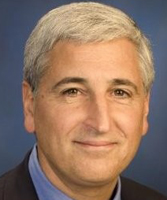Biopharma Leaders Need Lengthier Lists For Outsourcing Competency

By Louis Garguilo, Chief Editor, Outsourced Pharma

“If I’ve learned anything,” former long-time Abbott/Abbvie executive George Avgerinos muses, “It’s technological change is continual, but creating business value remains driven by a pretty consistent formula.” (see our first editorial here.)
With respect to operations, according to Avgerinos, biopharma needs to evaluate carefully what strategies best serve your development/supply-chain challenges at each point in time.
“Make your decisions, then remain humble as you consider what the heck might happen next,” he says.
Avgerinos, currently Senior Vice President of Biologics Operations at the Waltham office of New York-based Fortress Biotechnologies, offers an example at the drug-maker pinnacle:
“If I'm outsourcing a commercial drug’s manufacture, with agreed upon long range forecasts, the consideration of geography, for example, may become most important to the overall financial picture, due to the significance of local taxation.

These types of outsourcing choices, says Avgerinos, in making his overall point, would be different from the strategic (or tactical) considerations regarding, say, vendor location or critical competencies needed for projects at earlier development/scale-up stages.
What is required at every stage and every size biopharma is “the comprehensive analysis required to ensure all aspects of your outsourcing (or internal allocation of resources) are thoroughly considered before charting a path forward.”
“Think big, think long, and think detailed.”
A Measured Voyage
Avgerinos says no matter what you may feel sure of, at each stage of development, often as not it's still a “voyage of discovery.”
Even with larger, corporate-wide or life-cycle determined considerations “locked and loaded in your supply-chain apparatus, you still go to your ‘checklists’ upon which you’ve based your assessments.”
“The checklist itself may be long, and seem trivial,” says Avgerinos, “but the assessment is often in reality quite data-limited, and consequently often a bit controversial. As a consequence, you neglect things, don’t account accurately for others, get surprised, or aren’t prepared for the missed shots and required decisions that occur in any development and manufacturing program.”
So what’s on those checklists?
Avgerinos starts with considerations for all the analytical development needs at the product-characterization level.
There are considerations of structure, including mass spec, crystal structure, post-translational modifications, and other items to fully elucidate programs. “Either you meet these needs, or your CDMOs do – or you are considering the wrong CDMOs,” Avgerinos says.
Equally important is consideration of the “consequent functional side”: the level of mechanism-of-action understanding, bioassays, animal-model relevance for toxicology and pharmacodynamics, and expected depth of clinical understanding (such as biomarkers).
“This balance of mechanism of action/structure and function understanding, and the positioning of your discovery choice therein, will form yardsticks for what you're doing. If you have fewer yardsticks, you may encounter more drama. So you’ve got to decide what you need when, and how to measure outcomes – and return on investments – and your CDMOs are certainly a critical component.”
Second Considerations
“How do we get from here to there?” is the question setting off the next set of considerations.
These considerations – nuanced by company, pipeline, and individual project life cycle – are aimed at “the process skills,” which Avgerinos sets as a series of questions, such as:
- Does your program and current position in it critically depend on developing new technologies, or leveraging old ones?
- How does the organization know at each stage if you have “arrived” where we need to be? Can you know? When do we need to know?
- Exactly where does the business value you are betting on come from?
- Does your success depend upon successful commercialize-able productivity performance – or at this juncture, is good enough, good enough?
- Is it difficult to source or control starting materials?
- Are you dependent upon laser-like focus on particular structural attributes, or does a novel, inherent, mechanistically determined high level of efficacy robustly deliver what you expect to achieve?
- Do higher-pricing power, unmet need, or investor financial milestone goals render productivity and unit cost issues actually less important than timely milestone achievements?
Nearly out of breath – the above itemization came train-of-thought and quickly – Avgerinos concludes:
“It’s a long list. So go make your own assessment, and decide where you are in this Boolean space of needed partners, skills, time, and money.”
Who’s Capable?
It’s on to capabilities, with respect to “critical skills, installed equipment capacities, and factors contributing to strategic alignment.”
But be clear, says Avgerinos, who never waivers from a balanced combination of gravitas and levity on these subjects he has devoted a good portion of his life: “What comes next is contingent upon the lists you created above.”
The answer to his first question here might prove startling:
- When is it essential to your success to have the required, identified competencies in-house?
“Just in time, of course,” he replies, but after a pause for effect:
“But is that answer actually realistic or cost-effective? What are the alternatives – and what experience is required to know the difference?”
Alongside these considerations is a deeper assessment of how far you believe each vendor can take you, and what your transition plan is at each milestone.
“This is when you must carefully consider both your organization’s and vendor’s real experience, and the best fit,” explains Avgerinos:
- Have you/they actually ever done this particular step before? Have you/they done 10 of these, or something in between?”
- Are you/they actually the best organization to drive the next step in value creation?
And we haven’t even gotten to quality yet. But here are two main considerations:
- Does your organization and/or the CDMO have an understanding, based upon experience, of what is and isn't necessary from a risk-based quality perspective?
- How do you navigate this axis – as you move through the development process from beginning to end, requiring, for example, minimal consideration at the early stages to a total compliance-mindset approaching a commercial transition?
The Final Questioning
Along with all the above, Avgerinos finishes with these questions:
- How do biopharma then manage transparency, and full alignment within the organization, vis-à-vis the supplier, and internal at the supplier itself?
- Do you, as the sponsor organization, in fact fully understand vendor alignment, and what it actually means to work efficiently?
- Have you established a relationship of trust, with both your vendor network and your internal organization ‘customers,’ board members and shareholders?
- Are you casting a wide eye to the continually changing landscape of value creation?
“If you're Big Pharma, or a man or woman with a bright idea, you’re not serving your shareholders if you don't try to engage who you think are the best organizations in the world to drive the needs of your stage of the process,” says Avgerinos.
“It’s a challenging journey,” he says humbly. “But I know the network of highly differentiated and skilled CDMOs out there can make value creation at every step a real pleasure.”
“By working transparently in an aligned manner with each vendor, biopharma can achieve the desired leverage to create win-win solutions to drive high-quality programs in the service of patients.”
Got that on your list?
